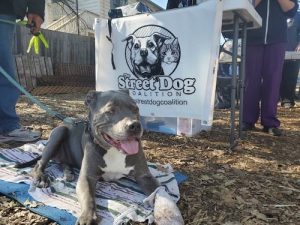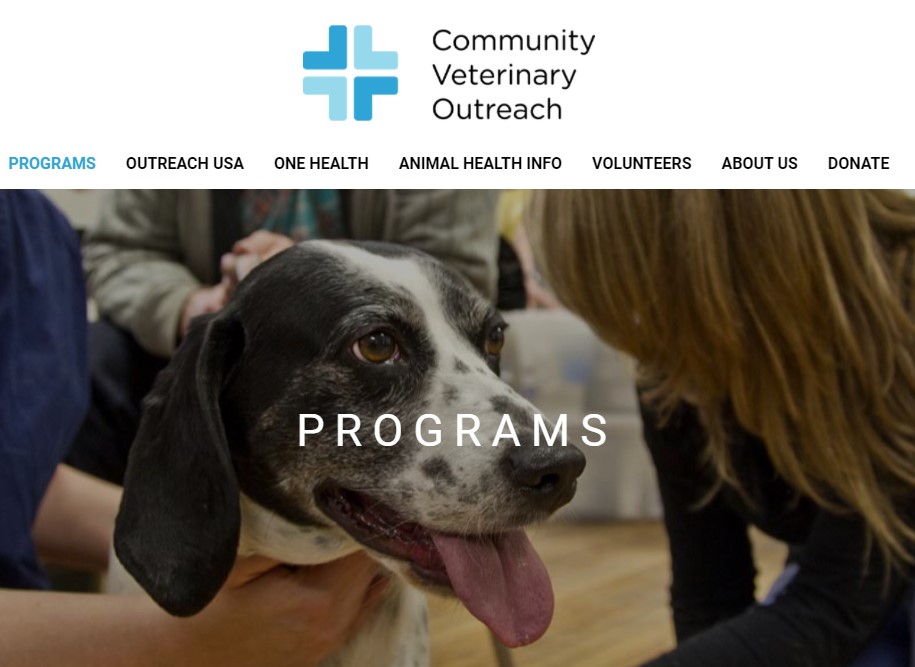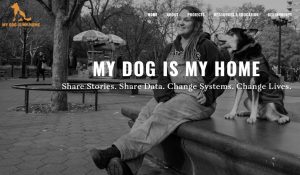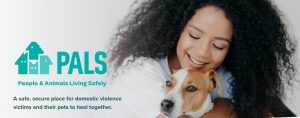Module 6: Integration of shelter and community healthcare programs for at-risk pets
Other Community Service Programs Addressing Pet Care Inequities
The inability to access veterinary care is not simply a financial problem. Numerous barriers to veterinary care have been identified and need to be addressed to support vulnerable pet owners. These include vet clinic business hours, clinic location, transportation to clinics, equipment to transport pets in (crates, leashes), cultural/language issues, and veterinarian–client communication.
Pets for Life is one approach to bringing free veterinary care and other resources to pets living in poverty. There are other community service programs that offer some type of free or low-cost veterinary medicine programs for pets in need to support their staying in homes instead of relinquished to shelters. One of the earliest was the free or low-cost high-quality, high-volume spay-neuter (HQHVSN) clinic. In the early 1970s, Los Angeles started HQHVSN clinics in local animal shelters to reduce pet overpopulation and euthanasia in shelters. At that time, only 10% of pet dogs and 1% of pet cats were sterilized, and the number of animals euthanized in shelters each year was between 22 and 24 million. Today, HQHVSN clinics allow pet owners who cannot afford full-service clinics to have their pets spayed or neutered, contributing a solution to the pet care inequity problem.
There is a common misconception that providing discounted or free veterinary services will take paying clients away from nearby veterinary hospitals, despite the fact that studies have consistently shown that the majority of owners accessing these services have not seen a veterinarian before.
What about the perceptions and experiences of pet owners that access veterinary care through such community-based programs? An ASPCA study examined perceptions and experiences of 100 pet owners accessing low-cost care from the Asheville Humane Society (AHS) mobile veterinary clinic and the stationary Asheville Humane Society (AHS) Affordable Pet Care Clinic. The owners were primarily White, non-Hispanic females with an annual household income of less than $20,000 and nearly half were unemployed. More than 50% had never sought veterinary care for their pets due to finances and lack of transportation. The main reason pet owners went to either clinic was to obtain preventive care for their pet, followed by non-emergency sick care. Most owners (87%) reported the care they received was very important in helping them keep their pet. Over 90% reported feeling the veterinarian respected their culture/beliefs and recognized the role their pet played in their lives. The study results demonstrated that it’s possible to create free and low-cost community programs that satisfy clients’ needs to be heard, valued, and respected and that help them keep their pets in the family.
Here are some examples of other community-based programs addressing pet care inequities.
Community Veterinary Outreach
Community Veterinary Outreach (CVO) is a volunteer-run nonprofit healthcare program in Canada and the US that aims to improve the health of unhomed or housing-insecure people and their pets through a “One Health” model of care. In this model, CVO improves access to veterinary and human health resources by combining free veterinary preventive care with human healthcare services in their One Health clinics stationed at different social service locations. Participants in the program must be referred by various community stakeholders such as domestic violence shelters, shelters for the unhomed, and hospitals devoted to serving low-income communities. In addition to food and grooming, free services for pets include veterinarian examinations, vaccinations, deworming, microchips, and in some locations, spay/neuter surgery.
Dr. Michelle Lem, veterinarian and founder of Community Veterinary Outreach, recently conducted a study with the University of Guelph to evaluate the health of pets belonging to people experiencing homelessness. Review of the medical records from more than 1100 CVO pet patients determined the pets of the homeless were as healthy as pets living in homes or had the same medical conditions as pets seen at private veterinary clinics. These findings challenged the stigma that the pets of homeless people are not well cared for. Read this short article summarizing the study findings, especially the last section on pets seen as a lifeline.
Check out the Community Veterinary Outreach website to learn more.
Companions and Animals for Reform and Equity
The mission of Companions and Animals for Reform and Equity (CARE) is to bring diverse voices to the Animal Welfare industry while advocating for a more inclusive path to pet adoption. CARE is using evidence-based tools and narratives to inspire animal welfare organizations to be more inclusive and less biased about people that desire pets. If the goal is to encourage more people to adopt from shelters instead of acquiring pets from other sources, then shelters must become more inclusive and welcoming to all types of people and the varied lives they lead. There is a 20% gap in adoption of pets between White people and African American people. A 3% increase in adoption by people of color would give 2 million more pets a home.
CARE is establishing centers in marginalized communities of color, led by those community leaders most knowledgeable about the challenges of pet ownership in their community. CARE provides funding, legal assistance, and skills training for each Center’s outreach focus. Some CARE Centers focus on providing transportation for pet owners to veterinary clinics, while others work on resolving issues related to animal control and pet adoption from shelters. CARE also provides funding for families with urgent vet care needs due to illness or injury to their pet.
Watch This
CARE believes in “the inherent goodness and dignity of all people, including ex-offenders, people without homes, seniors, renters, families with small children, and people of color.” Everyone who wants to adopt should have a fair opportunity.
Should shelters find reasons for people to adopt or not adopt? (3:50)
Check out the CARE website to learn more.
My Dog is My Home
The National Law Center on Homelessness & Poverty estimates up to 3.5 million people experience homelessness annually and roughly 3 to 5% have pets. But that percentage varies by community: in some areas, nearly 25% of the homeless population has pets. Many organizations offering shelter, housing, and soup kitchens do not allow animals on site, forcing the people experiencing homelessness with pets to decide not to utilize these services.
My Dog Is My Home’s mission is to increase access to shelter, housing, and other amenities for people experiencing homelessness and their pets. My Dog Is My Home started as an art activist project in LA that shared stories about the bond between people experiencing homelessness and their dogs through video interviews and pictures. The videos are personal stories of people experiencing homelessness who suffer from mental illness, inadequate health care or violence and how their dogs make them feel loved and safe. These stories shed light on the unique barriers to housing that unhoused people with dogs face. My Dog Is My Home sponsors the Co-Sheltering Collaborative, a national community of homeless service providers and government organizations actively working on innovative solutions for co-sheltering people and pets.
Watch This
Want to see more? Check out My Dog is My Home website.
The street dog coalition

The Street Dog Coalition was founded in 2015 by Dr. Jon Geller, veterinarian, as a “One Health Street Medicine” model to provide free medical care and related services to pets of people experiencing, or at risk of, homelessness. “People living on the street are isolated and often rejected by their families. Their pets offer companionship, protection, help them navigate dangerous places and give them purpose,” says Dr. Jon Geller. “We’re committed to protecting the human-animal bond and caring for the lives on both ends of the leash.”
Street Dog Coalition has expanded to over 60 cities across the US where teams of volunteer veterinarians, physicians, dentists, vet techs, nurses, social workers, and students deliver care in monthly clinics. The list of cities can be accessed here: https://www.thestreetdogcoalition.org/list-of-sdc-teams. There are 3 Street Dog Coalition cities in Florida: Brevard County, Broward County, and Jacksonville.
Watch This
Want to see more, including great pictures? Check out The Street Dog Coalition at https://www.thestreetdogcoalition.org/
The LA County Homeless Initiative
Los Angeles County has the second largest unhoused population in the US, second only to New York City. The County government created a county-wide Homeless Initiative to assist people experiencing homelessness by providing emergency shelter, rapid rehousing, permanent supportive housing and advocacy for unhoused disabled adults. This Initiative represents a collaboration between county government departments, service providers, civic leaders, and faith-based institutions.
The LA County Animal Care and Control Services is part of the Homeless Initiative. The shelter provides free vaccines, microchips, and spay/neuter surgery for pets belonging to those experiencing homelessness. The shelter medical team also provides treatment for medical conditions depending on scope, prognosis and ability to care for the pet during and after treatment. The shelter provides free emergency boarding as long as the owner consents to vaccines, microchip, and spay/neuter surgery for the pet. Lastly, the shelter donates food, crates, toys and other supplies to pet owners enrolled in the Initiative.
People and Animals Living Safely Program
More than 12 million people are affected by domestic violence and nearly half report concerns for their pet as a barrier to seeking safety. Their pet may be their only source of comfort and support. But abuse affects more than people: pets experience domestic violence in ways similar to people. In many cases, pets are used as leverage to further threaten, harm or control victims. In some cases, pets may try to intervene, leading them to become a direct target of an abuser. Those suffering from domestic abuse do not want to leave their pet behind, but <10% of the domestic violence shelters in the US permit pets. Do they flee with their children and leave their pet behind? Do they place their pet with a shelter or rescue group and hope for the best? Do they stay and try to keep their family intact despite abuse? Or is there a better way?
The People and Animals Living Safely (PALS) Program in New York City provides co-sheltering services for domestic violence survivors and their pets, including subsidized veterinary care and pet supplies. Started in 2019, PALS Place is the first domestic violence shelter in the nation and the only co-living shelter in New York City in which every apartment unit has been designed to shelter pets alongside their families in the same safe, secure space.
Watch This
Check out the Urban Resource Institute: People & Animals Living Safely website.





